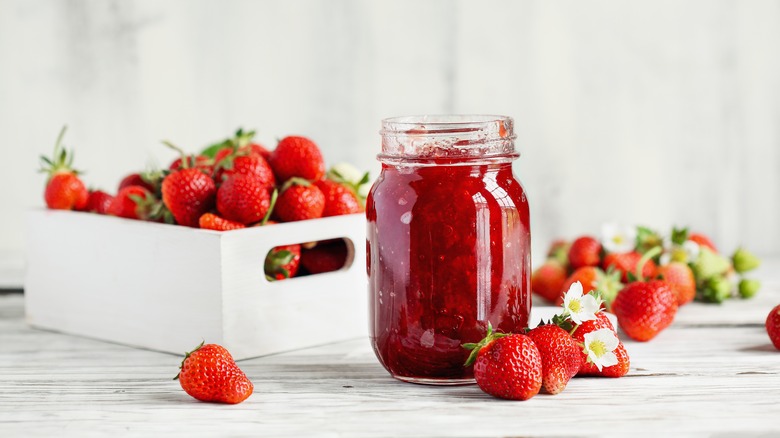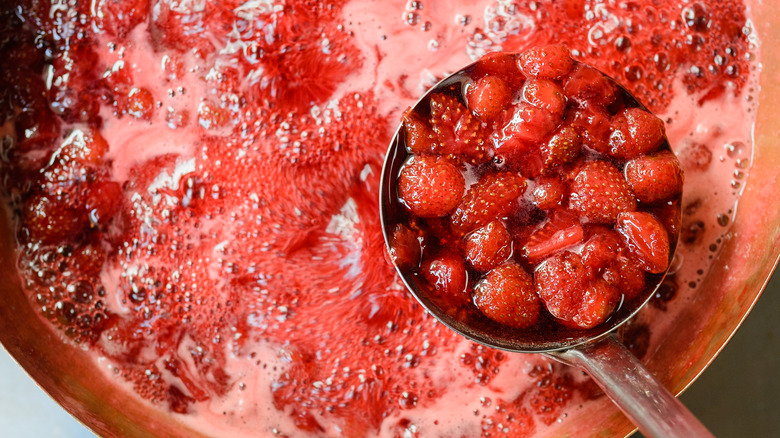The Best Way To Test If Your Homemade Jelly Is Done
A healthy treat that tastes like candy, peanut butter's partner in crime, the number one way to dress your morning toast — we could go on and on about jelly's many accolades. Not to be confused with jam, jelly preserves your favorite summer fruits into a firm rather than watery spread. And jelly's special consistency is why many cooks love to use it to add extra flavor to foods. After all, would any donut be complete without a decadent jelly filling? Biting into broiled cod finished off with a delectable jelly glaze for dinner sounds pretty good, too (per Food Network). But if you really want to ensure the jelly you use tastes as delicious as possible, you need to make it yourself.
According to Healthline, store-bought jellies are typically made from less-than-fresh fruits, which causes their quality to suffer. And a jar of grape jelly from your local grocery store also usually comes with added sugar and food dyes. But by making this spread at home, you'll be able to use only the best ingredients to whip up the most delicious and nutritionally balanced jellies. However, if you do make your own jelly, you may find yourself struggling with how to gauge when a jar of freshly preserved strawberries is ripe for spreading. And while there are many different ways to test if your jelly is done, there is one method that is guaranteed to work like a charm every time.
The temperature test stands above the rest
The National Center for Home Preservation (NCHP) reports that there are three different ways to test if your jelly is ready. One method, referred to as the spoon test, states that your jelly is done if, after dipping a spoon into the spread, its drops mix together and slowly "sheet" while dripping from the utensil. The freezer test, meanwhile, dictates that your jelly is ready if you find that it turns solid once you put a portion of it in the freezer. However, the outlet reports that the temperature test is the best way to check if your jelly has set.
As The Food Fanatic notes, canned fruit preserves are only ready after they have hit their gelling point — the temperature at which your strawberries turn from fruit to jelly. This is why the NCHP reports that the best way to ensure your jelly is done is to check it with a candy thermometer. If your jelly's temperature comes out at 220 degrees Fahrenheit, it has reached the gel point and is ready to spread on your peanut butter and jelly sandwich. However, the site also notes that the temperature varies by sea level. To adjust, subtract two degrees from 220 for every 1,000 feet above sea level your kitchen sits. With that adjustment in mind and a thermometer in hand, you'll always confidently know when your spread is done.

